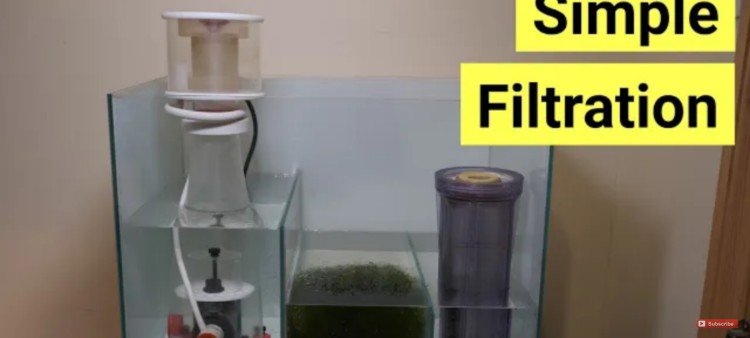Top 5 Filters For a Saltwater Aquarium
- Feb 21, 2022
- Anshika Mishra
- 245 0 0

Here, you will know about five different filters options that you should use on your first saltwater aquarium.
Auto Filter Roller
Tanks like Red Sea Reefers come with built-in filter socks as the first filtration stage. They catch uneaten food and help remove detritus that heads down to your sump.
But, filter socks can be a lot of hassle to maintain as they clog very quickly and need cleaning in the washing machine. Furthermore, if you don't change them all the time, the food they trap will decay in your water, defeating the objective of filtration.
An automatic filter roller regularly turns throughout the day, which means that the uneaten food gets removed instantly before it can break down and pollute your tank. So, they are far more effective than socks.
It will help with nitrates and, to a lesser extent, phosphate, but as a bruise bonus, it should also improve your water quality.
They are expensive, though. But, you can achieve similar effects by using filter floss in plastic cups instead. Then throw away the dirty floss every few days.
But, if you have the budget and also an auto-filter roller will not only reduce your nitrate but will also save you maintenance which is always money well spent.
Algae Refugium
The theory behind growing macroalgae like Cato in your sump is that it will use up all the nutrients that nuisance algae would otherwise use to grow in the display tank. But refugium alone won't stop nuisance algae growing in your display tank.
But it will help reduce nitrates, and the bruising bonus with a refugium is that they are excellent places with microfauna to grow. So they are not only important for your tank's ecosystem but also a delicious snack for your fish.
However, refugium does not control phosphate in your tank. So, it a nitrate control in your tank and place for pods to grow more than anything else.
All you need to set up a refugium is a section in your sump: some Kato algae and a light. You should set the refugium lights on at night when the display tank's lights turn off and turn it off in the morning when your display tank's lights come on.
This will help keep your pH well and stable that will help coral growth.
Activated Carbon
Activated carbon will be familiar to those who have kept freshwater tanks. The main benefit of activated carbon is that it can remove tannins from your water, giving your water a nasty yellow tint.
When used properly, you will be astonished by how crystal clear your water gets with activated carbon. The difference is night and day, and you will notice the effect within a matter of hours.
It can also remove odor from your tank and toxins released by your corals. Soft corals release toxins into the water column, harming other corals.
The easy way to run carbon is to put a small amount in a filter bag and leave it somewhere in your sump. Make sure you rinse it with RO water first, as it is dusty. Adding too much can be harmful to your fish. So, change a small amount once a month adn you'll be fine.
Granular Ferrous Oxise (GFO)
When most aquarium filters are primarily controlled nitrates, GFO is the most effective way to remove phosphate from your aquarium.
With most tanks, while you don't want nitrate to get out of control, you certainly don't want it to be zero, and anything between around five parts per million and twenty-five parts per million is fine.
On the other hand, phosphate is far more important to keep at low levels. Of course, you don't want zero phosphates with nitrates, but anything around 0.03 to 0.06 is ideal.
The best way to achieve this is to test it every week, or so adn change it roughly once a month or when your phosphate gets too high.
You can plunk a bit in a filter bag and place it in your sump as with activated carbon. But, it is far more effective to have it tumbling gently in a phosphate reactor. Given that phosphate is likely to cause any nuisance algae in your tank, a reactor is well worth the effort and expense.
Protein Skimmer
Protein skimmers work by mixing air with your aquarium water to create thousands of tiny bubbles. These bubbles then pick out gunk from your water and push it into the skimmer cup so you can remove it.
The most compelling argument for why you should get a skimmer is the disgusting mess it pulls out. It does not take a marine biologist to see that your tank is better off without this chocolate soup floating around your water.
Skimmers also oxygenate your water which your fish and coral will appreciate, and a decent skimmer combined with an aerophos reactor can be the only filtration you need.






About author